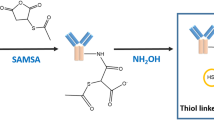Abstract
A novel electrochemical immunoassay for glypicans-3 (GPC3) was established based on its new high affinity antibody (Ig). In this study, we used glass carbon film (GCF) as carrier for immobilizing Ig and avoiding the high electron transfer resistance (Ret) in electrochemical immunoassay sensor (Ig-Biotin-GR/GCE) because many materials such as bovine serum albumin (BSA), avidin, biotin, Ig, GPC3, and ALP were covered on. The Ig was combined with GCP3 labeled alkaline phosphatase (ALP-GPC3) which catalyzes p-nitro phenyl phosphate (PNPP) into p-nitro phenol (PNP). In order to obtain highly sensitive electrochemical signals of the PNP and further determine ALP-GPC3, the GR/GCE modified polylysine (PLYS/GR/GCE) was fabricated and used for detecting the PNP. According to the principle of competitive inhibition, less ALP-GPC3 would be combined with the Ig in the presence of GPC3. By investigating the signals of PNP in the absence and presence of GPC3, GPC3 could be qualitatively and quantitatively analyzed. Under the optimal conditions, the peak current of PNP on the PLYS/GR/GCE was linear with the concentration of GPC3 in the range of 0.75~75 ng mL−1 and a detection limit of 0.2 ng mL−1. The recognition of GPC3 and detection of PNP were separated, which provides a new way for studying the diagnosis of liver cancer.






Similar content being viewed by others
References
Bosch FX, Ribes J, Díaz M, Cléries R (2004) Primary liver cancer: worldwide incidence and trends. Gastroenterology 127:S5–S16
Thorgeirsson SS, Grisham JW (2002) Molecular pathogenesis of human hepatocellular carcinoma. Nat Genet 31:339–346
Taketa K (1990) Fetoprotein: reevaluation in hepatology. Hepatology 12:1420–1432
Collier J, Sherman M (1998) Elevated alphafetoprotein in benign liver diseases. Viral Hepat Rev 43:1–41
Filmus J, Church JG, Buick RN (1988) Isolation of a cDNA corresponding to a developmentally regulated transcript in rat intestine. Mol Cell Biol 8:4243–4249
Filmus J, Capurro M, Rast J (2008) Glypicans. Genome Biol 9:224
Hsu HC, Cheng W, Lai PL (1997) Cloning and expression of a developmentally regulated transcript MXR7 in hepatocellular carcinoma: biological significance and temporospatial distribution. Cancer Res 57:5179–5184
Zhu ZW, Friess H, Wang L, Abou-Shady M, Zimmermann A, Lander AD, Korc M, Kleeff J, Büchler MW (2001) Enhanced GPC3 expression differentiates the majority of hepatocellular carcinomas from benign hepatic disorders. Gut 48:558–564
Feng J, Zhu R, Chang C, Yu L, Cao F, Zhu GH, Chen F, Xia H, Lv FD, Zhang SJ, Sun L (2016) CK19 and glypican3 expression profiling in the prognostic indication for patients with HCC after surgical resection. PLoS One 11:1–13
Capurro M, Wanless IR, Sherman M, Filmus J (2003) GPC3: a novel serum and histochemical marker for hepatocellular carcinoma. Gastroenterology 125:81–90
Ho M, Kim H (2011) GPC3: a new target for cancer immunotherapy. Eur J Cancer 47:333–338
Filmus J, Capurro M (2013) GPC3: a marker and a therapeutic target in hepatocellular carcinoma. FEBS J 280:2471–2476
Tangkijvanich P, Chanmee T, Komtong S (2010) Diagnostic role of serum glypican-3 in differentiating hepatocellular carcinoma from non-malignant chronic liver disease and other liver cancers. J Gastroenterol Hepatol 25:129–137
Capurro M, Wanless IR, Sherman M, Filmus J (2003) Glypican 3: a novel serum and histochemical marker for hepatocellular carcinoma. Gastroenterology 125:89–97
Zhang QY, Chen H, Lin Z, Lin JM (2011) Chemiluminescence enzyme immunoassay based on magnetic nanoparticles for detection of hepatocellular carcinoma marker glypican-3. J Pharm Anal 1:166–174
Yuan GL, He JL, Li Y, Xu WL, Gao LL, Yu C (2015) A novel ultrasensitive electrochemical immunosensor based on carboxy-endcapped conductive polypyrrole for the detection of gypican-3 in human serum. Anal Methods 7:1745–1750
Huang Y, Li H, Gao T, Li G (2014) A sensitive method for protein assays using a peptide-based nano-label: human glypican-3 detection for hepatocellular carcinomas diagnosis. Analyst 139:3744–3747
Jiang X, Li D, Xu X, Ying Y, Li Y, Ye Z, Wang J (2008) Immunosensors for detection of pesticide residues. Biosens Bioelectron 23:1577–1587
Balkenhohl T, Lisdat F (2007) Screen-printed electrodes as impedimetric immunosensors for the detection of anti-transglutaminase antibodies in human sera. Anal Chim Acta 597:50–57
Fowler JM, Stuart MC, Wong DKY (2007) Comparative study of thiolated protein G scaffolds and signal antibody conjugates in the development of electrochemical immunosensors. Biosens Bioelectron 23:633–639
Tully E, Higson SP, Kennedy RO' (2008) The development of a ‘labeless’ immunosensor for the detection of Listeria monocytogenes cell surface protein, Internalin B. Biosens Bioelectron 23:906–912
Lu J, Liu S, Ge S, Hu X (2012) Ultrasensitive electrochemical immunosensor based on Au nanoparticles dotted carbon nanotube-graphene composite and functionalized mesoporous materials. Biosens Bioelectron 33:29–35
Jiao K, Sun W, Wang H (2001) A system of p-nitrophenylphate-alkaline phosphatase for voltammetric enzyme-linked immunoassay. Chinese J Anal Chem 29:1174–1177
Acknowledgments
We are grateful for the financial support of the National Natural Science Foundation of China (No. 21105023), A Project of Shandong Province Higher Educational Science and Technology Program (J14LC55), the Natural Science Foundation of Shandong Province, China (ZR2014BL020, BS2013HZ027), the Shandong Province Science and Technology Development Plan Grant (2013GSF12106), and Scientific Research Foundation of Heze University (XY14KJ02).
Author information
Authors and Affiliations
Corresponding authors
Rights and permissions
About this article
Cite this article
Ma, X., Wang, X., Chen, M. et al. Study on a new high affinity anti-glypicans-3 antibody in diagnosis of early hepatocellular carcinoma by differential pulse voltammetry. J Solid State Electrochem 21, 1631–1637 (2017). https://doi.org/10.1007/s10008-017-3535-1
Received:
Revised:
Accepted:
Published:
Issue Date:
DOI: https://doi.org/10.1007/s10008-017-3535-1




